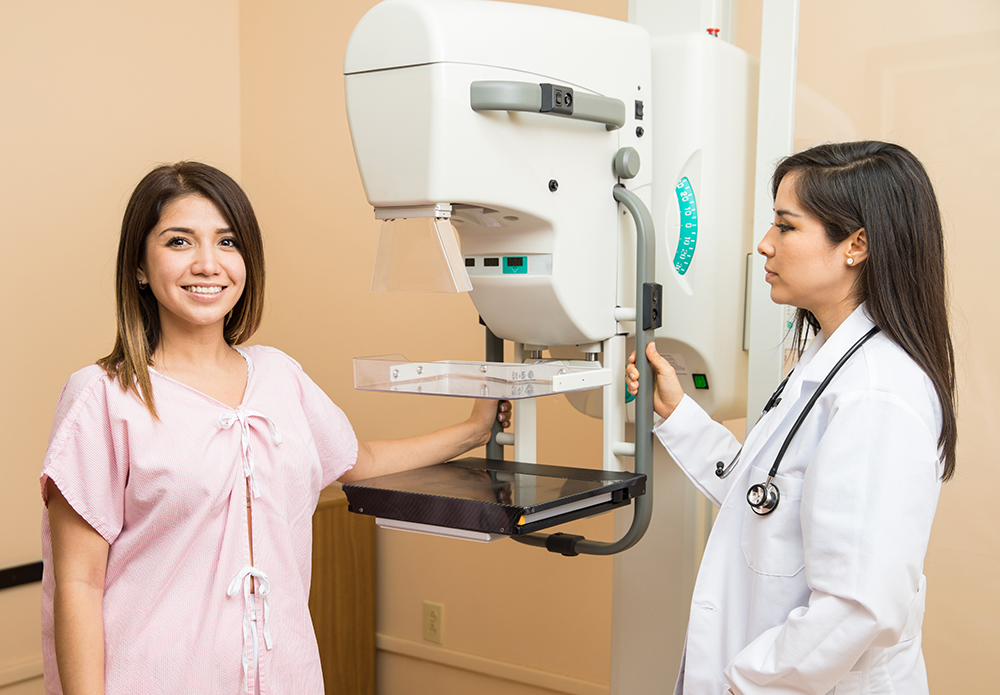According to cancer screening guidelines, if you’re over 40, or if you have a family history of breast cancer, it’s time to start thinking about getting an annual mammogram.

A mammogram is a x-ray picture of the breast and is used to screen for breast cancer. When it’s used to check for breast cancer in someone who has no symptoms, it’s called a “screening mammogram.” A “diagnostic mammogram” is used to to further investigate suspicious areas and often involves more pictures.
If this is your first mammogram, it’s natural to feel a little nervous. Good news is that getting a mammogram is quick, usually 10 minutes in front of the machine, with an additional 10-20 minutes to fill out paperwork. Here’s some tips for sailing through your first mammogram with a minimum of fuss.
Scheduling Your Mammogram
- If you do not have health insurance or are not covered for mammograms, give us a call at SHAREing & CAREing—we can direct to free or low-cost mammogram screening locations in the Queens area
- If you have a regular period, schedule your mammogram a week after your period—this is the time your breasts will feel less tender
- Make your appointment early in the day if not wearing deodorant or other cosmetics bothers you
- Schedule your appointment on a date that you can remember every year—know how you’re supposed to change your smoke detector batteries on the two yearly Daylight Savings Time days? Pick a day every year that will remind you to do a mammogram, like October 1 (for Breast Cancer Awareness Month), Mother’s Day, or your birthday
- If you’re nervous, schedule to go with a friend and have a ladies brunch afterwards!
Get our “Thriver Thursdays” Email
Get all the latest cancer prevention and treatment news plus upcoming survivor programs, straight to your inbox every Thursday. Your privacy is important to us.
Before Your Mammogram
- Check out our Scenes From A Mammogram Facebook album—this photo documentation of Lisa Kramer’s first mammogram will show you what to expect and put you at ease
- Don’t wear deodorant, lotion or powder in the chest or underarm area—it can show up on the mammogram and be registered as calcifications or other abnormalities
- Bring deodorant or other cosmetics with you to apply after your appointment
- Wear an outfit with a separate top and bottom—you’ll need to take your top off for the x-rays
- Bring the name and contact information of your gynecologist or primary care doctor with you—that way the radiologist can send the mammogram results to him or her
- Bring something to do while you wait—a book will keep you from worrying about the exam
- Don’t worry! Mammograms are routine procedures and few women find breast cancer on a screening mammogram
Still nervous? That’s okay. Give us a call at SHAREing & CAREing and we can help walk you through the process. As survivors ourselves, our founders and survivor volunteers have a wealth of experience in getting mammograms and we can make you feel at ease.

